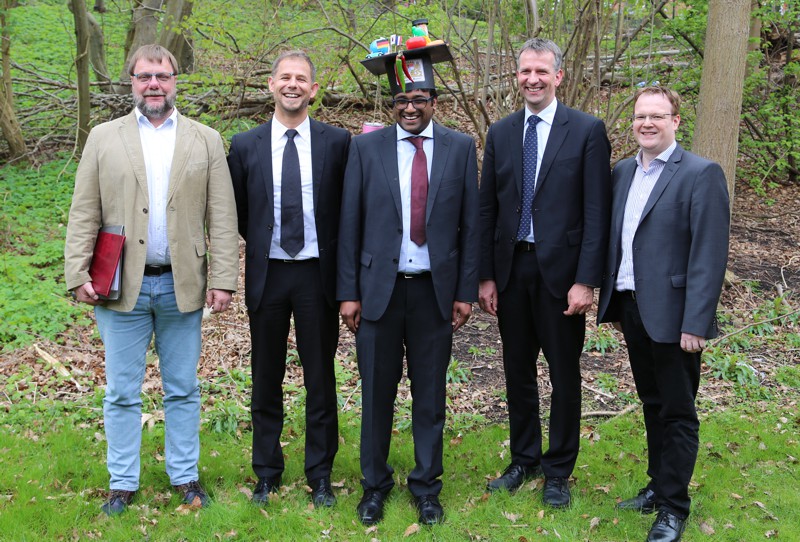No. 8 - Jens Reermann
Jens Reermann: Signalverarbeitung für magnetoelektrische Sensorsysteme
Shaker-Verlag, 2017
Commission
- Prof. Dr.-Ing. Gerhard Schmidt
(first reviewer)
- Prof. Dr. rer. nat. habil. Franz Faupel
(second reviewer)
- Prof. Dr.-Ing. Dr.-Ing. habil. Robert Weigel
(third reviewer)
- Prof. Dr.-Ing. Michael Höft
(examiner)
- Prof. Dr.-Ing. habil. Eckhard Quandt
(head of the examination board)
Abstract
The measurement of magnetic fields for medical diagnostics is only well-established at highly specialized centers because of the high costs involved. The reason for this is the indispensable use of highly sensitive magnetic field sensors based on Super-Conducting Quantum Interference Devices. Although such systems have met the necessary technical requirements for decades, they are nonetheless expensive and very complicated to run because of cryogenic cooling. To establish the widespread use of magnetic measurements in the field of medicine, concepts for sensors that are uncooled, and thereby less expensive and user-friendly, are being researched with detection limits sufficient for measurements. A promising area of research deals with magnetoelectric sensors (ME-sensors).
To increase the usability of such sensors in realistic measurement environments and improve their signal quality with respect to the signal-to-noise ratio (SNR), this thesis examines various methods of signal processing. First, the basic procedures for measuring magnetic signals using the ME-sensors are presented. Special attention is paid to the modelling of sensor systems, the determination of the operation point, and the reduction of the signal dynamic. Due to their cantilever design, the ME-sensors have a high mechanic cross-sensitivity. Furthermore, they also measure magnetic fields of disturbing sources. To reduce their influence, the work presented here investigates different approaches based on noise cancellation. The use of a magnetic reference successfully cancels magnetic disturbances. With regard to acoustic or mechanical disturbances, various reference sensors are considered.
Irrespective of the distortion type, their influence can be reduced by up to 40 dB. Additionally, combination approaches are also investigated. These approaches are based on the idea of utilizing different frequency ranges in parallel and subsequently combining the sensor readout signals. By means of such methods, the detection limit of the sensors can be improved by more than 5 dB. In addition to this static improvement, another decisive advantage is achieved with dynamically adapting the combination. If a continuous data stream is not required and the desired signal has in principle a periodic nature, several averaging methods for an improved detection limit are discussed. In the same way, adaptive implementation of the averaging process can reduce the crosssensitivity.
These methods enabled the first biomagnetic measurement with an MEsensor by detecting the R-wave as part of a magnetocardiogram. All in all, each processing step permits continued improvement of the sensor signal with regard to their SNR. The usability of the ME-sensors in real measurement environments is thereby significantly improved.






 On behalf of the members of the Chair of Digital Signal Processing and System Theory, we would like to take this opportunity to wish you all a very Merry Christmas and a peaceful, restful winter break. We hope that this festive season brings you joy, relaxation, and cherished moments with your loved ones.
On behalf of the members of the Chair of Digital Signal Processing and System Theory, we would like to take this opportunity to wish you all a very Merry Christmas and a peaceful, restful winter break. We hope that this festive season brings you joy, relaxation, and cherished moments with your loved ones.